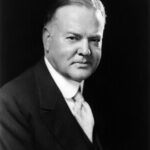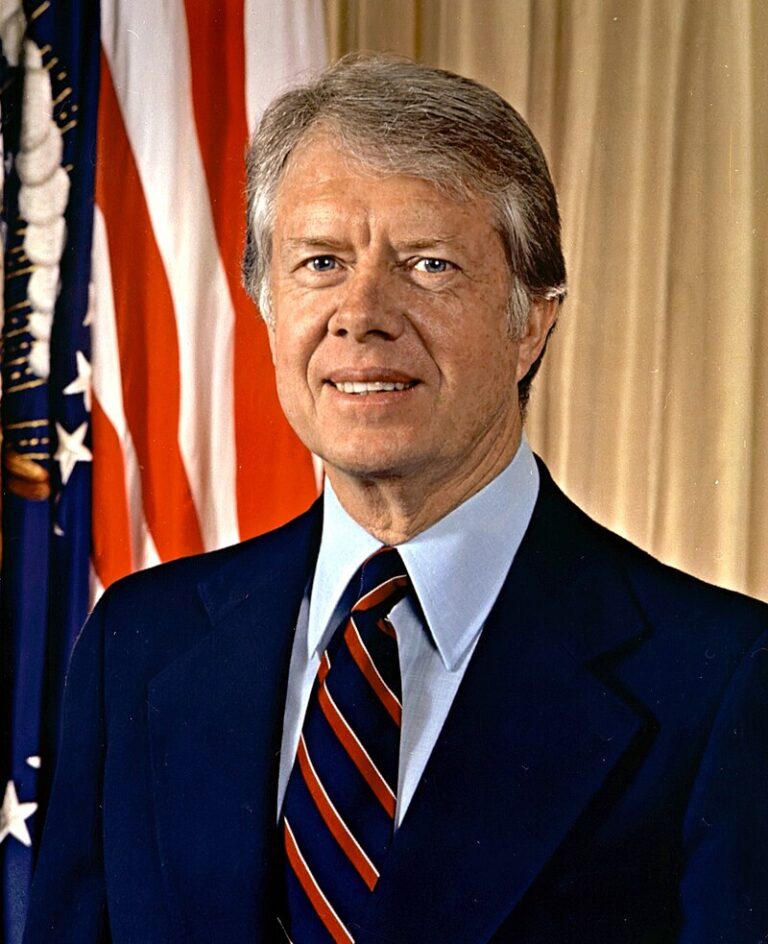
Herbert Hoover served as the 31st President of the United States from 1929 to 1933. His presidency is primarily remembered for coinciding with the onset of the Great Depression, one of the most severe economic downturns in American history. Here’s an in-depth look at his term:
Background and Rise to Presidency:
- Born in 1874 in West Branch, Iowa, Hoover became an internationally renowned mining engineer and businessman before entering politics. He served as U.S. Food Administrator during World War I, managing food relief efforts both in the U.S. and abroad, earning him the nickname “The Great Humanitarian.”
- Under Presidents Harding and Coolidge, he was Secretary of Commerce, where he promoted efficiency and cooperation between government and industry.
Presidency during the Great Depression:
- Stock Market Crash (1929): Hoover took office just months before the stock market crash in October 1929, which marked the beginning of the Great Depression. His term was dominated by efforts to address this economic catastrophe.
- Economic Policies:
- Volunteerism: Initially, Hoover favored voluntary cooperation between businesses, labor, and government to stabilize the economy. He encouraged businesses not to cut wages or lay off workers, hoping this would maintain consumer spending.
- Public Works: He launched public works projects like the Hoover Dam (originally named Boulder Dam) to provide employment and stimulate the economy.
- Reconstruction Finance Corporation (RFC, 1932): This was perhaps his most significant legislative achievement, providing federal loans to banks, railroads, and state and local governments to keep them solvent.
- Smoot-Hawley Tariff (1930): Although Hoover signed this tariff into law, it’s widely criticized for exacerbating the depression by reducing international trade.
- Agricultural Marketing Act (1929): Aimed at supporting farmers by stabilizing agricultural prices, but it was insufficient to prevent the sharp decline in farm income.
Social and Political Challenges:
- Bonus Army: In 1932, World War I veterans marched on Washington to demand early payment of their service bonuses. Hoover’s response, involving the use of military force to disperse the veterans, was seen as harsh and contributed to his declining popularity.
- Unemployment: Unemployment soared from 3.2% in 1929 to 23.6% by 1932, with widespread poverty, leading to “Hoovervilles” (shantytowns named after him in derision) and other symbols of public discontent.
- Public Perception: Hoover was often blamed for the economic disaster, despite his attempts at intervention, leading to his name becoming synonymous with the depression.
Foreign Policy:
- Reparations and War Debts: Hoover negotiated the Hoover Moratorium (1931), a one-year halt on war reparations payments by Germany and on inter-Allied war debts, in an attempt to stabilize Europe’s economy.
- Latin America: He continued the policy of non-intervention in Latin America, though his administration was involved in some diplomatic efforts in the region.
Legacy:
- Electoral Defeat: Hoover lost in a landslide to Franklin D. Roosevelt in the 1932 election, marking a shift from the Republican dominance of the 1920s to the Democratic era of the New Deal.
- Post-Presidency: Post-presidency, Hoover attempted to rehabilitate his image through writing and public service, including work on reorganization of the executive branch. He lived until 1964, engaging in various humanitarian efforts and serving on numerous commissions.
- Historical View: Hoover is often critiqued for his initial reluctance to engage in direct government relief, though some historians argue he laid groundwork for later federal intervention by establishing entities like the RFC. His presidency is a cautionary tale in economic policy, illustrating the complexities of managing an economic crisis with traditional laissez-faire approaches.
Hoover’s presidency is emblematic of the challenges of leadership during economic turmoil, showing how quickly public perception and historical judgment can pivot based on the outcomes of economic policies.











